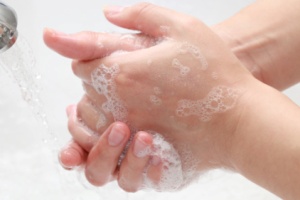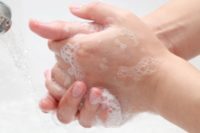 Hand washing is a vital tool in preventing the spread of bacteria and viruses that can cause infections and foodborne illness. People can be a significant source of harmful microorganisms. Proper handwashing by food employees is necessary to control direct and indirect contamination of food, utensils, and equipment.
Hand washing is a vital tool in preventing the spread of bacteria and viruses that can cause infections and foodborne illness. People can be a significant source of harmful microorganisms. Proper handwashing by food employees is necessary to control direct and indirect contamination of food, utensils, and equipment.
Here are situations that call for washing your hands:
• Before starting to work with food, utensils, or equipment.
• When switching between raw foods and ready-to-eat foods.
• After handling utensils and equipment that contact raw food or is re-soiled.
• After coughing, sneezing, using a tissue, or using tobacco products.
• After eating or drinking.
• After touching bare human body parts other than clean hands.
• After handling animals.
• After using the toilet room.
• At all other times as necessary during food preparation.
Proper way to wash hands:
• Before washing hands, remove any jewelry.
• Wash hands only in the sink designated for handwashing.
• Do not wash hands in a service sink or one used for washing utensils.
Follow these six steps:
To avoid re-contaminating their hands or surrogate prosthetic devices, food employees should use disposable paper towels or similar clean barriers when touching surfaces such as manually operated faucet handles on a handwashing sink or the handle of a restroom door.
● Wet hands and exposed portion of forearms with warm water.
● Using soap, work up a lather that covers hands and forearms.
● Vigorously rub hands together for at least 20 seconds. Pay particular attention to the areas under the fingernails and between the fingers.
● Rinse hands and forearms in clean water.
● Dry hands and forearms.
● Turn taps off with paper towel if available.
Source: Michigan State University


